115 low relevance results shown for 'System'. |1|2|3|4|5 | Next | View 100 per page
Showing low relevance matches only. Return to normal search results
Earth Moon Sun - The Earth is part of a system of planets orbiting around a star (the sun) ACSSU150 Year 8 Biological Sciences
Organ Systems - Multi-cellular organisms contain systems of organs that carry out specialised functions that enable them to survive and reproduce ACSSU155 Year 8 Physical Sciences
Energy Forms - Energy appears in different forms, including movement (kinetic energy), heat and potential energy, and energy transformations and transfers cause change within systems ACSSU175 Year 9 Biological Sciences
Organ Systems - Multi-cellular organisms rely on coordinated and interdependent internal systems to respond to changes to their environment ACSSU176 Year 9 Biological Sciences
Ecology - Ecosystems consist of communities of interdependent organisms and abiotic components of the environment; matter and energy flow through these systems ACSSU179 Year 9 Chemical Sciences
Chemical Reactions - Chemical reactions, including combustion and the reactions of acids, are important in both non-living and living systems and involve energy transfer ACSSU188 Year 10 Earth and Space Sciences
Universe - The universe contains features including galaxies, stars and solar systems and the Big Bang theory can be used to explain the origin the universe ACSSU189 Year 10 Earth and Space Sciences
Global Systems - Global systems, including the carbon cycle, rely on interactions involving the biosphere, lithosphere, hydrosphere and atmosphere ACSSU190 Year 10 Physical Sciences
Energy Conservation - Energy conservation in a system can be explained by describing energy transfers and transformations ACSBL019 Year 11 Biodiversity and the interconnectedness of life
Describing biodiversity - Ecosystems are diverse, composed of varied habitats and can be described in terms of their component species, species interactions and the abiotic factors that make up the environment ACSBL029 Year 11 Biodiversity and the interconnectedness of life
Ecosystem dynamics - Models of ecosystem interactions (for example, food webs, successional models) can be used to predict the impact of change and are based on interpretation of and extrapolation from sample data (for example, data derived from ecosystem surveying techniques ACSCH061 Year 11 Molecular interactions and reactions
Aqueous solutions and acidity - Water is a key substance in a range of chemical systems because of its unique properties, including its boiling point, density in solid and liquid phases, surface tension, and ability to act as a solvent ACSCH091 Year 12 Equilibrium acids and redox reactions
Chemical equilibrium systems - Over time, physical changes and reversible chemical reactions reach a state of dynamic equilibrium in a closed system, with the relative concentrations of products and reactants defining the position of equilibrium ACSCH096 Year 12 Equilibrium acids and redox reactions
Chemical equilibrium systems - Equilibrium position can be predicted qualitatively using equilibrium constants ACSCH097 Year 12 Equilibrium acids and redox reactions
Chemical equilibrium systems - Acids are substances that can act as proton (hydrogen ion) donors and can be classified as monoprotic or polyprotic depending on the number of protons donated by each molecule of the acid ACSCH098 Year 12 Equilibrium acids and redox reactions
Chemical equilibrium systems - The strength of acids is explained by the degree of ionisation at equilibrium in aqueous solution, which can be represented with chemical equations and equilibrium constants (Ka) ACSCH099 Year 12 Equilibrium acids and redox reactions
Chemical equilibrium systems - The relationship between acids and bases in equilibrium systems can be explained using the Brønsted Lowry model and represented using chemical equations that illustrate the transfer of hydrogen ions ACSCH100 Year 12 Equilibrium acids and redox reactions
Chemical equilibrium systems - The pH scale is a logarithmic scale and the pH of a solution can be calculated from the concentration of hydrogen ions; Kw can be used to calculate the concentration of hydrogen ions from the concentration of hydroxide ions in a solution ACSCH101 Year 12 Equilibrium acids and redox reactions
Chemical equilibrium systems - Acidbase indicators are weak acids or bases where the acidic form is of a different colour to the basic form ACSCH102 Year 12 Equilibrium acids and redox reactions
Chemical equilibrium systems - Volumetric analysis methods involving acidbase reactions rely on the identification of an equivalence point by measuring the associated change in pH, using chemical indicators or pH meters, to reveal an observable end point ACSPH016 Year 11 Thermal nuclear and electrical physics
Heating processes - Heat transfer occurs between and within systems by conduction, convection and/or radiation ACSPH022 Year 11 Thermal nuclear and electrical physics
Heating processes - Two systems in contact transfer energy between particles so that eventually the systems reach the same temperature; that is, they are in thermal equilibrium ACSPH064 Year 11 Linear Motion and Waves
Linear motion and force - Momentum is a property of moving objects; it is conserved in a closed system and may be transferred from one object to another when a force acts over a time interval ACSPH065 Year 11 Linear Motion and Waves
Linear motion and force - Energy is conserved in isolated systems and is transferred from one object to another when a force is applied over a distance; this causes work to be done and changes to kinetic and/or potential energy of objects ACSPH073 Year 11 Linear Motion and Waves
Waves - A mechanical system resonates when it is driven at one of its natural frequencies of oscillation; energy is transferred efficiently into systems under these conditions ACSBL052 Year 11 Biodiversity and the interconnectedness of life
Ecosystem dynamics - Photosynthesis is a biochemical process that in plant cells occurs in the chloroplast and that uses light energy to organic compounds; the overall process can be represented as a balanced chemical equation ACSBL053 Year 11 Biodiversity and the interconnectedness of life
Ecosystem dynamics - Cellular respiration is a biochemical process that occurs in different locations in the cytosol and mitochondria and metabolises organic compounds, aerobically or anaerobically, to release useable energy in the form of ATP; the overall process can be repr ACSPH021 Year 11 Thermal nuclear and electrical physics
Heating processes - Change of state involves internal energy changes to form or break bonds between atoms or molecules; latent heat is the energy required to be added to or removed from a system to change the state of the system

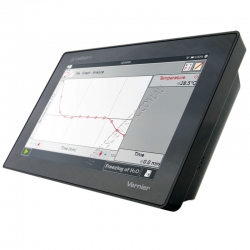
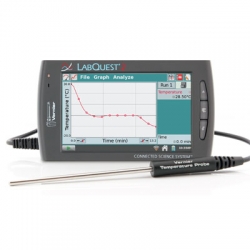

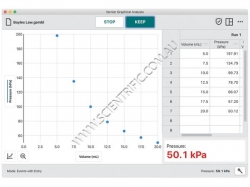



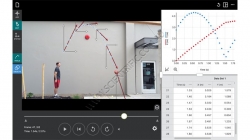


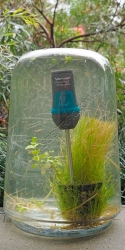


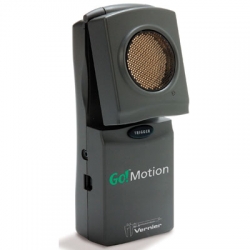

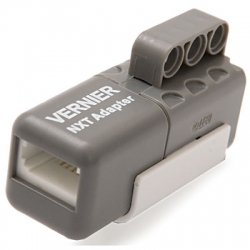
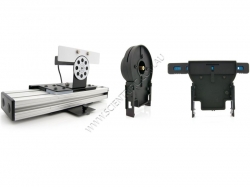

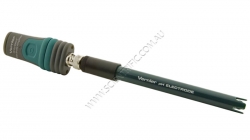
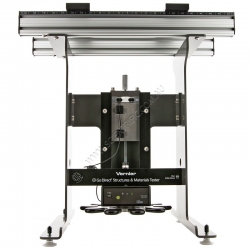
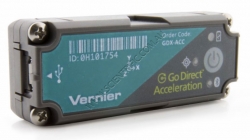
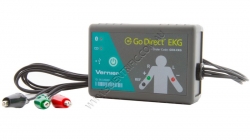

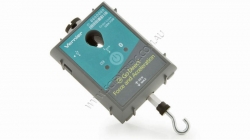
115 low relevance results shown for 'System'. |1|2|3|4|5 | Next | View 100 per page
Showing low relevance matches only. Return to normal search results
Curriculum resources related to 'System'
ACSSU078 Year 5 Earth and Space SciencesEarth Moon Sun - The Earth is part of a system of planets orbiting around a star (the sun) ACSSU150 Year 8 Biological Sciences
Organ Systems - Multi-cellular organisms contain systems of organs that carry out specialised functions that enable them to survive and reproduce ACSSU155 Year 8 Physical Sciences
Energy Forms - Energy appears in different forms, including movement (kinetic energy), heat and potential energy, and energy transformations and transfers cause change within systems ACSSU175 Year 9 Biological Sciences
Organ Systems - Multi-cellular organisms rely on coordinated and interdependent internal systems to respond to changes to their environment ACSSU176 Year 9 Biological Sciences
Ecology - Ecosystems consist of communities of interdependent organisms and abiotic components of the environment; matter and energy flow through these systems ACSSU179 Year 9 Chemical Sciences
Chemical Reactions - Chemical reactions, including combustion and the reactions of acids, are important in both non-living and living systems and involve energy transfer ACSSU188 Year 10 Earth and Space Sciences
Universe - The universe contains features including galaxies, stars and solar systems and the Big Bang theory can be used to explain the origin the universe ACSSU189 Year 10 Earth and Space Sciences
Global Systems - Global systems, including the carbon cycle, rely on interactions involving the biosphere, lithosphere, hydrosphere and atmosphere ACSSU190 Year 10 Physical Sciences
Energy Conservation - Energy conservation in a system can be explained by describing energy transfers and transformations ACSBL019 Year 11 Biodiversity and the interconnectedness of life
Describing biodiversity - Ecosystems are diverse, composed of varied habitats and can be described in terms of their component species, species interactions and the abiotic factors that make up the environment ACSBL029 Year 11 Biodiversity and the interconnectedness of life
Ecosystem dynamics - Models of ecosystem interactions (for example, food webs, successional models) can be used to predict the impact of change and are based on interpretation of and extrapolation from sample data (for example, data derived from ecosystem surveying techniques ACSCH061 Year 11 Molecular interactions and reactions
Aqueous solutions and acidity - Water is a key substance in a range of chemical systems because of its unique properties, including its boiling point, density in solid and liquid phases, surface tension, and ability to act as a solvent ACSCH091 Year 12 Equilibrium acids and redox reactions
Chemical equilibrium systems - Over time, physical changes and reversible chemical reactions reach a state of dynamic equilibrium in a closed system, with the relative concentrations of products and reactants defining the position of equilibrium ACSCH096 Year 12 Equilibrium acids and redox reactions
Chemical equilibrium systems - Equilibrium position can be predicted qualitatively using equilibrium constants ACSCH097 Year 12 Equilibrium acids and redox reactions
Chemical equilibrium systems - Acids are substances that can act as proton (hydrogen ion) donors and can be classified as monoprotic or polyprotic depending on the number of protons donated by each molecule of the acid ACSCH098 Year 12 Equilibrium acids and redox reactions
Chemical equilibrium systems - The strength of acids is explained by the degree of ionisation at equilibrium in aqueous solution, which can be represented with chemical equations and equilibrium constants (Ka) ACSCH099 Year 12 Equilibrium acids and redox reactions
Chemical equilibrium systems - The relationship between acids and bases in equilibrium systems can be explained using the Brønsted Lowry model and represented using chemical equations that illustrate the transfer of hydrogen ions ACSCH100 Year 12 Equilibrium acids and redox reactions
Chemical equilibrium systems - The pH scale is a logarithmic scale and the pH of a solution can be calculated from the concentration of hydrogen ions; Kw can be used to calculate the concentration of hydrogen ions from the concentration of hydroxide ions in a solution ACSCH101 Year 12 Equilibrium acids and redox reactions
Chemical equilibrium systems - Acidbase indicators are weak acids or bases where the acidic form is of a different colour to the basic form ACSCH102 Year 12 Equilibrium acids and redox reactions
Chemical equilibrium systems - Volumetric analysis methods involving acidbase reactions rely on the identification of an equivalence point by measuring the associated change in pH, using chemical indicators or pH meters, to reveal an observable end point ACSPH016 Year 11 Thermal nuclear and electrical physics
Heating processes - Heat transfer occurs between and within systems by conduction, convection and/or radiation ACSPH022 Year 11 Thermal nuclear and electrical physics
Heating processes - Two systems in contact transfer energy between particles so that eventually the systems reach the same temperature; that is, they are in thermal equilibrium ACSPH064 Year 11 Linear Motion and Waves
Linear motion and force - Momentum is a property of moving objects; it is conserved in a closed system and may be transferred from one object to another when a force acts over a time interval ACSPH065 Year 11 Linear Motion and Waves
Linear motion and force - Energy is conserved in isolated systems and is transferred from one object to another when a force is applied over a distance; this causes work to be done and changes to kinetic and/or potential energy of objects ACSPH073 Year 11 Linear Motion and Waves
Waves - A mechanical system resonates when it is driven at one of its natural frequencies of oscillation; energy is transferred efficiently into systems under these conditions ACSBL052 Year 11 Biodiversity and the interconnectedness of life
Ecosystem dynamics - Photosynthesis is a biochemical process that in plant cells occurs in the chloroplast and that uses light energy to organic compounds; the overall process can be represented as a balanced chemical equation ACSBL053 Year 11 Biodiversity and the interconnectedness of life
Ecosystem dynamics - Cellular respiration is a biochemical process that occurs in different locations in the cytosol and mitochondria and metabolises organic compounds, aerobically or anaerobically, to release useable energy in the form of ATP; the overall process can be repr ACSPH021 Year 11 Thermal nuclear and electrical physics
Heating processes - Change of state involves internal energy changes to form or break bonds between atoms or molecules; latent heat is the energy required to be added to or removed from a system to change the state of the system
Products related to 'System'

Vernier Go Direct Temperature Probe
VERNIER GO DIRECT TEMPERATURE PROBE
Vernier's water resistant Go Direct Temperature Probe is a rugged, general purpose temperature sensor that students can use to monitor temperature. It connects wirelessly via Bluetooth® or it can be wired via USB to your device.
...
Order code: GDX-TMP

Vernier LabQuest 3 Data Logger and Interface
VERNIER LABQUEST 3
The new Vernier LabQuest 3 is a powerful, advanced, easy-to-navigate and versatile datalogging solution for STEM students. It is a standalone data-collection platform that allows students to collect, analyze, graph and interact with data efficiently. St...
Order code: LQ3

Vernier LabQuest 2 Data Logger and Interface
No longer available replaced by LabQuest 3
Vernier's popular LabQuest 2 is now discontinued as it has been superseded by the LABQ3 Vernier LabQuest 3 a powerful, advanced, easy-to-navigate and versatile datalogging solution for STEM students. The Vernier LabQues... Order code: LABQ2
Vernier's popular LabQuest 2 is now discontinued as it has been superseded by the LABQ3 Vernier LabQuest 3 a powerful, advanced, easy-to-navigate and versatile datalogging solution for STEM students. The Vernier LabQues... Order code: LABQ2

Vernier LabQuest Viewer
VERNIER LABQUEST VIEWER:
LabQuest Viewer software allows you to view and control the LabQuest wirelessly from your Windows or Mac computer. When LabQuest 2 is connected to a computer wirelessly or via USB, LabQuest Viewer can be used in conjunction with a projector to sha...
Order code: LQ-VIEW

Vernier Graphical Analysis
Free download
VERNIER GRAPHICAL ANALYSIS
Vernier's Graphical Analysis™ is a free software tool for science students to collect, share, graph and analyse data
from Vernier sensors using Chrome™, Windows®, Mac OS™, iOS® and Android™ devices.
Downloads:
• Windows computer r...

Vernier Graphical Analysis Pro 1 Year
VERNIER GRAPHICAL ANALYSIS PRO 1 YEAR
Vernier Graphical Analysis Pro is a subscription licence that expands the features of the free Vernier Graphical Analysis app.
This one year subscription provides all students and...
Order code: GAP-1Y

Vernier Graphical Analysis Pro 3 Years
VERNIER GRAPHICAL ANALYSIS PRO 3 YEARS
Vernier Graphical Analysis Pro is a subscription licence that expands the features of the free Vernier Graphical Analysis app.
This 3 year subscription provides all students and ...
Order code: GAP-3Y

Vernier Graphical Analysis Pro Individual 1 Year
VERNIER GRAPHICAL ANALYSIS PRO INDIVIDUAL 1 YEAR
Vernier Graphical Analysis Pro is an annual subscription licence that expands the features of the free Vernier Graphical Analysis app. This version of the licence allows...
Order code: GAP-IND-1Y

Vernier Video Analysis 1 Year
VERNIER VIDEO ANALYSIS 1 YEAR
Vernier Video Analysis is an annual subscription licence that brings video analysis to your students in a dedicated and streamlined application.
This one year site subscription provides all students and educators at your school or universit...
Order code: VVA-1Y

Vernier Video Analysis 3 Years
VERNIER VIDEO ANALYSIS 3 YEARS
Vernier Video Analysis is an annual subscription licence that brings video analysis to your students in a dedicated and streamlined application.
This 3 year site subscription provides all students and educators at your school or university...
Order code: VVA-3Y

Vernier Video Analysis Individual 1 Year
VERNIER VIDEO ANALYSIS INDIVIDUAL 1 YEAR
Vernier Video Analysis is an annual subscription licence that brings video analysis to your students in a dedicated and streamlined application. This version of the licence allows very small schools to subscribe per student per yea...
Order code: VVA-IND-1Y

Vernier Go Direct Temperature Teacher Pack
VERNIER GO DIRECT TEMPERATURE PROBE TEACHER PACK
Buy more and save. With Vernier's Go Direct Temperature Teacher Pack you receive eight Vernier Go Direct Temperature Probes and a convenient charging station that allows you to charge the eight Go Direct Temperature Probes ...
Order code: GDX-TMP-TP

Vernier Go Direct Wide Range Temperature Probe
VERNIER GO DIRECT WIDE RANGE TEMPERATURE PROBE
Measuring the temperature of a distillation has never been safer — your students can conduct an experiment within the laboratory fume hood while collecting data at their lab station. The Vernier Go Direct Wide-Range Temperatu...
Order code: GDX-WRT

Vernier Go Direct Surface Temperature Sensor
VERNIER GO DIRECT SURFACE TEMPERATURE SENSOR
Designed for use in situations in which low thermal mass or flexibility is required, the Vernier Go Direct Surface Temperature Sensor connects wirelessly via Bluetooth® or wired via USB to your device.
This sensor has an exp...
Order code: GDX-ST

Vernier Go!Motion Data Logger with Logger Lite software
VERNIER GO!MOTION
Go!Motion is Vernier's motion detector that connects directly to a computer or Chromebook USB port eliminating the need for an additional data-collection interface, making it fast and easy to set up experiments and start collecting a wide range of real-t...
Order code: GO-MOT

Vernier Go!Motion Data Logger Teacher Pack of 8
VERNIER GO!MOTION DATA LOGGER Teacher Pack of 8.
Save money when you purchase the Vernier Go!Motion Teacher Pack which includes eight Go!Motion USB motion detectors.
Go!Motion is Vernier's motion detector that connects directly to a computer or Chromebook USB port elim...
Order code: GO-MOT-TP

Vernier NXT Sensor Adapter
Discontinued - only 2 in stock
VERNIER NXT SENSOR ADAPTOR.
The Vernier NXT Sensor Adapter allows Vernier sensors to work on the LEGO® MINDSTORMS® NXT and EV3 robotics system. Listed below are compatible sensors for measuring everything from temperature, force, light level, UV level, pH and more.
• C...
Order code: BTA-NXT

Vernier Diffraction Apparatus
VERNIER DIFFRACTION APPARATUS
The Vernier Diffraction Apparatus lets students create, view and measure diffraction and interference patterns. The included Red Diffraction Laser provides a clean monochromatic light source. Slits are made by depositing metal film on glass, ...
Order code: DAK

Vernier Go Direct Centripetal Force Apparatus
VERNIER GO DIRECT CENTRIPETAL FORCE APPARATUS
The Vernier Go Direct Centripetal Force Apparatus and Vernier Go Direct Force and Acceleration Sensor (not included) make an ideal combination to explore rotational dynamics.
When students use the Vernier Go Direct Centripe...
Order code: GDX-CFA

Vernier Go Direct pH Sensor
VERNIER GO DIRECT pH SENSOR
Vernier's Go Direct pH Sensor is a general purpose pH sensor used to monitor the pH of aqueous solutions. It directly connects wirelessly via Bluetooth® or wired via USB to your platform.
The Vernier Go Direct pH Sensor is an important and v...
Order code: GDX-PH

Vernier Go Direct Structures & Materials Tester
VERNIER GO DIRECT STRUCTURES AND MATERIALS TESTER
Vernier's Go Direct Structures and Materials Tester is an excellent tool for teaching engineering concepts and design processes. Students evaluate truss, bridge or other structure strength by measuring the applied load and...
Order code: GDX-VSMT

Vernier Go Direct Acceleration Sensor
VERNIER GO DIRECT ACCELERATION SENSOR
Collect acceleration, rotation and altitude data in the classroom or in the field. Vernier's Go Direct Acceleration Sensor connects wirelessly via Bluetooth® or wired via USB to your device.
This 3-axis acceleration sensor has two ...
Order code: GDX-ACC

Vernier Go Direct EKG Sensor
VERNIER GO DIRECT EKG SENSOR
The Vernier Go Direct EKG Sensor measures electrical activity in the heart and electrical signals produced during muscle contractions. The wireless options minimize the concern of cables getting caught and tangled during experiments. This sens...
Order code: GDX-EKG

Vernier Go Direct Ethanol Vapour Sensor
VERNIER GO DIRECT ETHANOL VAPOUR SENSOR
Vernier's Go Direct Ethanol Vapour Sensor measures the concentration of ethanol in the air above an aqueous sample. This sensor can be used in a wide variety of biological, agricultural, food and environmental studies.
Experimen...
Order code: GDX-ETOH

Vernier Go Direct Force and Acceleration Sensor
VERNIER GO DIRECT FORCE AND ACCELERATION SENSOR
Vernier's Go Direct Force and Acceleration Sensor couples a 3-axis accelerometer with a stable and accurate force sensor that measures forces as small as ±0.1N and up to ±50N. Measure pushes and pulls in the classroom or out...
Order code: GDX-FOR
115 low relevance results shown for 'System'. |1|2|3|4|5 | Next | View 100 per page



 ,
,